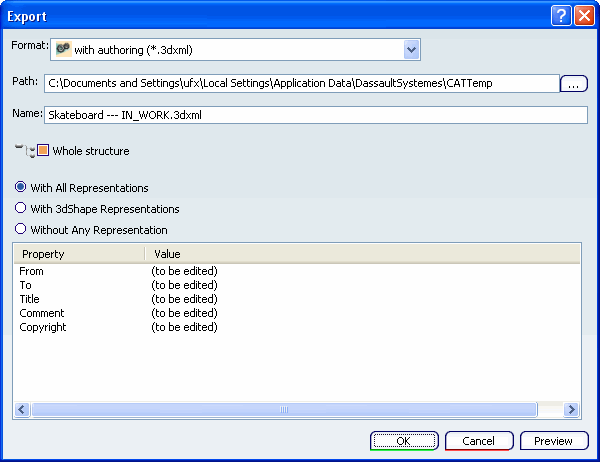You can access the Export
command as follows:
-
From the menu, select PLM Access > Export.
-
In the Data Exchange Toolbar, click the
Export icon
 .
.
The Export dialog box appears.

Select the Whole structure option if you
want to export the visible expanded data from the database.
Note that selecting the Whole Structure option
when exporting from the VPM navigation window implies that only visible
data is exported when selecting filtered products.
In the Format list select either with
authoring, which allows exchanging this data on another site via
import, or for review, which allows you to perform a DMU
review on the exported file. For more information, see VPM
Digital Review > User Tasks > Setting Up Your Session > Importing 3D
XML Files.

Enter the Path and Name for the
exported file. You can browse for the directory using the
browse button  . The name of the exported file is automatically generated based on the display name of the selected object. You can modify it if you want.
. The name of the exported file is automatically generated based on the display name of the selected object. You can modify it if you want.


Note:
If the same data is selected for export at the same location again, then a number is appended at the end of the name. For example, Skateboard --- IN_WORK[1].3dxml.
If needed, you can edit the properties of the 3dxml
file by clicking on the <to be edited> text in any row.

This Id card can be viewed by the receiver before importing the file.
You are not required to enter data. Each of these attributes can
be filled in with any data you choose. If you do not enter any
data, a blank is saved (the text "to be edited" is not saved).
The data is embedded in the 3D XML file, therefore, after export, you
cannot interactively edit the data.
Click Preview to see a list of the objects
to be exported.
If one of the selected entities is not supported for export, none of
the selections will be exported, and the 3D XML will not be generated.
Click OK to finish the export.